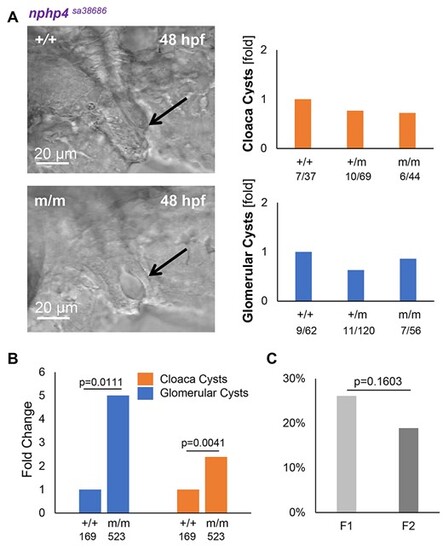Fig. 2
- ID
- ZDB-FIG-230517-8
- Publication
- Kayser et al., 2022 - Clock genes rescue nphp mutations in zebrafish
- Other Figures
- All Figure Page
- Back to All Figure Page
|
Maternal zygotic nphp4sa38686 (m/m) zebrafish mutants display an increase in cyst formation. (A) Crossing of heterozygote +/nphp4sa38686 did not increase glomerular cysts or cloaca malformation. The left images depict typical examples of normal (+/+) and defective cloaca formation (m/m) in zebrafish embryos at 48 hpf, visualized by DIC microscopy. The arrows point to a normally developed cloaca (upper panel) and a cloaca cyst (bottom panel). The numbers below the graphs depict the fraction of embryos with cysts and the total number of analyzed embryos. (B) Crossing of homozygote nphp4sa38686 (m/m) zebrafish resulted in a 5-fold increase in glomerular and in a 2-fold increase in cloaca cyst formation in homozygote (m/m) maternal zygotic zebrafish embryos in comparison with wild-type (+/+) siblings (Fisher’s exact test, two-sided). The numbers displayed below the graph depict the group size. (C) The combined number of glomerular and cloaca cyst formation declined slightly from the nphp4sa38686 (m/m) F1 to the F2 generation (Fisher’s exact test, two-sided). |

